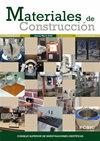Eco-efficient alkaline activated binders for manufacturing blocks and pedestrian pavers with low carbon footprint: Mechanical properties and LCA assessment
IF 1.5
4区 工程技术
Q3 CONSTRUCTION & BUILDING TECHNOLOGY
引用次数: 9
Abstract
This study proposes using two types of binders based on fly ash (FA) as primary raw material and a calcium source such as ground granulated blast furnace slag (GBFS) or Portland cement (OPC) for the production of eco-efficient pre-fabricated materials. These binders are denoted FA/GBFS (70/30) and FA/OPC (80/20). A mix of commercial sodium silicate and sodium hydroxide was used as a traditional activator (SN), and the mix of rice husk ash (RHA) and NaOH as an alternative activator (RN). The results show the possibility of obtaining a binary cement (FA/GBFS-RN) with compressive strength up to 38 MPa after curing for 28 days and 65 MPa after curing for 360 days. The hybrid binder (FA/OPC-RN) reported 30 MPa and 61 MPa at the same age of curing. Additionally, FA/GBFS-RN reports reductions in the environmental and health impacts of up to 75% compared to systems made with sodium silicate and sodium hydroxide. Based on the results, FA/ GBFS-RN paste was selected as the optimal material for producing masonry blocks and pedestrian pavers, which met the Colombian standards.用于制造低碳足迹砌块和人行道摊铺机的环保碱性活性粘合剂:机械性能和LCA评估
本研究建议使用两种基于粉煤灰(FA)作为主要原料的粘合剂和钙源,如磨碎的高炉矿渣(GBFS)或硅酸盐水泥(OPC),用于生产生态高效的预制材料。这些粘合剂表示为FA/GBFS(70/30)和FA/OPC(80/20)。商业硅酸钠和氢氧化钠的混合物用作传统活化剂(SN),稻壳灰(RHA)和NaOH的混合物用作替代活化剂(RN)。结果表明,在固化28天后获得抗压强度高达38MPa和固化360天后获得抗压抗压强度高至65MPa的二元水泥(FA/GBFS-RN)的可能性。混合粘合剂(FA/OPC-RN)在相同的固化年龄下分别为30MPa和61MPa。此外,FA/GBFS-RN报告称,与用硅酸钠和氢氧化钠制成的系统相比,环境和健康影响减少了75%。根据研究结果,选择了符合哥伦比亚标准的FA/GBFS-RN浆体作为生产砌块和人行道摊铺机的最佳材料。
本文章由计算机程序翻译,如有差异,请以英文原文为准。
求助全文
约1分钟内获得全文
求助全文
来源期刊

Materiales de Construccion
工程技术-材料科学:综合
CiteScore
3.20
自引率
9.50%
发文量
38
审稿时长
>12 weeks
期刊介绍:
Materiales de Construcción is a quarterly, scientific Journal published in English, intended for researchers, plant technicians and other professionals engaged in the area of Construction, Materials Science and Technology. Scientific articles focus mainly on:
- Physics and chemistry of the formation of cement and other binders.
- Cement and concrete. Components (aggregate, admixtures, additions and similar). Behaviour and properties.
- Durability and corrosion of other construction materials.
- Restoration and conservation of the materials in heritage monuments.
- Weathering and the deterioration of construction materials.
- Use of industrial waste and by-products in construction.
- Manufacture and properties of other construction materials, such as: gypsum/plaster, lime%2
 求助内容:
求助内容: 应助结果提醒方式:
应助结果提醒方式:


